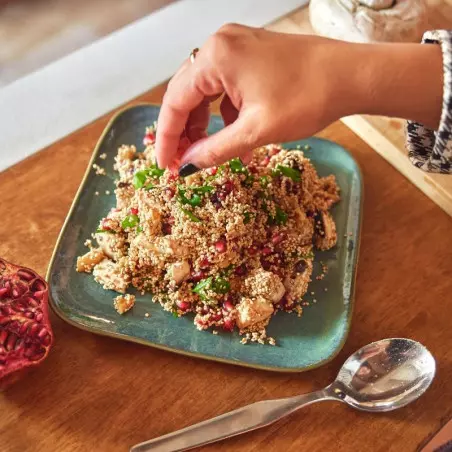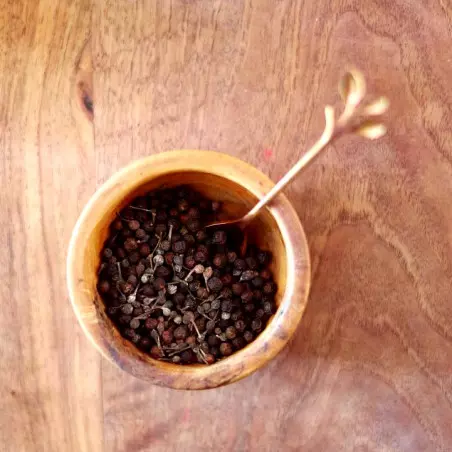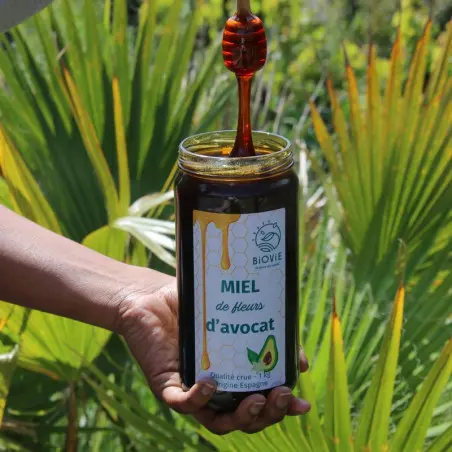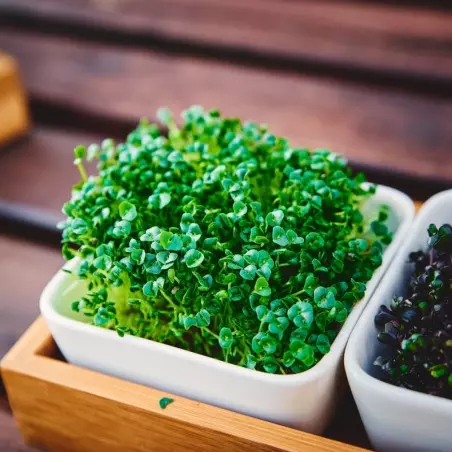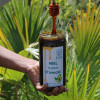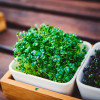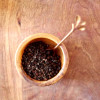Originally from the highlands of South America, the Quinoa, a traditional plant and a staple in the diet of Indians for centuries, has earned a well-deserved reputation as a superfoodand as an excellent source of essential nutrients. But did you know that the Quinoa has another impressive asset up its sleeve? Well, it turns out that the Quinoa is The fastest seed to germinate, and it can be used to prepare all your raw and cooked recipes, isn't that great ?
If you want to minimize the time and effort to germinate a seed while maximizing its nutritional value, quinoa is the ideal choice.
In this article, we will examine in detail why the Germination of the quinoa seeds is the fastest and how this characteristic can add an important nutritional dimension to your diet. Discover how this ancient plant, known as "I'm sorry, but "chisiya mama" does not appear to be a phrase in French. Could you please provide more context or check for any errors? by the indigenous people, can become a key element of your diet.
Why sprout quinoa?
The sprouted seed quinoa presents some nutritional qualities exceptional qualities that make it an excellent source of minerals and of Proteins. .
The quinoa germination offers several Nutritional benefits and can contribute to a healthier diet : she increases the bioavailability of nutrients by breaking down certain anti-nutritional compounds present in seeds, such as phytic acid, which usually prevents the seed from growing. This will allow nutrients such as iron, calcium, and zinc to be better absorbed by the body, thus improving the overall nutritional value.
The Germination, it is the beginning of the process for the seed to become a plant, she therefore starts to produce all the trace elements she needs to grow. She thus increases the content of vitamins such as vitamin C and certain B-group vitamins like vitamins B1, B2, B9 ..., as well as minerals like magnesium and potassium, and antioxidants.
However, that does not mean that non-germinated quinoa is not a good source of nutrients; it is also an essential food because it is renowned for its richness in proteins, fibers, vitamins, amino acids, and minerals qcan contribute to a healthy diet. Sprouting quinoa, on the other hand, is a very interesting option for people looking to further optimize the nutritional value of this food.
Quinoa is not a mucilaginous seed. The quinoa seeds are rather known for their ability to become slightly crispy when cooked and do not produce a slimy gel.
What are the different types of quinoa?
There are several types of quinoa, each with its own characteristics of color, taste, and texture:
White quinoa : This is the most commonly available type of quinoa on the market. White quinoa seeds have an ivory or white color. It has a mild flavor and a slightly crunchy texture. You will find it in our store. of the white quinoa from Anjou, , from a French supply chain and certified organic which is characterized by the absence of saponin, Who is responsible for the bitter taste of the small quinoa seed? White quinoa is versatile and can be used in a variety of dishes.
Red quinoa Red quinoa has a darker color and a tangy flavor compared to white quinoa. It retains its red color after cooking, making it an attractive choice for salads.
Black quinoa Black quinoa, also known as royal black quinoa, has a robust flavor and a crunchy texture. Its black color visually distinguishes it from other varieties of quinoa.
Tricolor quinoa : Tricolor quinoa is a blend of white, red, and black quinoa. It offers a combination of flavors and textures, as well as an attractive visual presentation in dishes.
Quinoa with canihua Canihua is a variety related to quinoa that is sometimes called "baby quinoa" due to its small size. It has a flavor similar to quinoa but is smaller and darker.
Each of these varieties of quinoa is an excellent source of vitamins and offers slightly different flavor and texture nuances, allowing them to be adapted to various recipes.
Black radish can be paired with quinoa to create tasty and nutritious dishes. Black radish has a slightly spicy flavor and a crunchy texture that can add contrast and freshness to your quinoa salads.
I'm sorry, but it seems that there is no text provided for translation. Could you please provide the text you would like me to translate? All these varieties of quinoa are rich in proteins, fibers, and essential nutrients., making it a healthy choice regardless of which one you choose.
How to sprout quinoa ?
It is easy to sprout quinoa at home. You just need to follow the steps that we will detail for you below:
You will need:
- uncooked whole grain quinoa,
- from a large bowl or a glass container,
- a sieve or a fine strainer,
- a clean and dry glass jar with a lid or a cheesecloth,
- from a dark and warm place.
Here are the steps to follow for the germination of the Quinoa:
- Start by measuring the amount of quinoa seeds you want to sprout and place them in a large bowl or glass container.
- Soak these small seeds in water to allow them to absorb the necessary water to start activating the internal enzymes and initiate the germination process. The soaking time for quinoa is generally 2 hours.
- Rinse the seeds thoroughly with cold water to remove any starch and saponin residue, as it gives quinoa a bitter taste. Then use a sieve or fine strainer to drain the seeds well and remove excess water.
- Transfer the rinsed seeds into a clean and dry glass jar, and cover it with a perforated lid or cheesecloth secured with a rubber band. Place the jar in a dark, warm spot at room temperature to allow germination, which can take from 12 to 48 hours. Be careful not to exceed 2 days of germination as the taste of quinoa may become stronger and more bitter, emitting a sour smell.
- Rinse the seeds with cold water during the germination period and drain them every 8 to 12 hours (twice a day) to prevent the seeds from rotting and to promote the growth of sprouts.
- When the sprouts begin to emerge, remove them from the jar and rinse them one last time. Then spread the seeds on a paper towel or a tray and let them dry at room temperature.
- You can store the sprouts once dry in the refrigerator in a closed container with plastic wrap for a few days.
Germination is an easy and accessible process for everyone, almost foolproof, and it can be successfully done even by using just a strainer if you don't have specialized equipment.
The benefits of germination on the quality of quinoa:
The germination of quinoa brings several benefits to its nutritional quality by modifying certain components and improving its digestibility. We will mention some nutritional changes that occur after the germination of quinoa:
Better protein digestibility Sprouted quinoa is a good source of protein. These proteins are more digestible due to the reduction of enzyme inhibitors. In naturopathy, quinoa is more often considered a protein due to its high content and low glycemic index (53).. . It is a low starch, easily digestible, whose nutritional value and assimilation will be further enhanced by germination!
Reduction of resistant starch levels : Germination can reduce the resistant starch content of quinoa, which helps regulate intestinal transit and can be beneficial for people who have digestion problems.
Better taste and texture Sprouted quinoa can have a mild flavor and a slightly different texture compared to non-sprouted quinoa, making it more enjoyable for some people. The delicate flavor of quinoa is reminiscent of nuts.
It's much more than just a cereal. : With 10% fiber - as much as whole grains - but much more protein, vitamins, amino acids, and minerals, it is referred to as a "pseudo-cereal," with quinoa seeds being harvested from a herb. Quinoa is non-GMO... and gluten-free !!
Acidic changes in quinoa after germination : The germination of quinoa leads to a transformation of the components of this seed, including acids. Germination can promote the formation of free amino acids, such as lysine, which increases the nutritional quality of sprouted quinoa.
Regarding lipids and fats, germination can also influence the fatty acids in quinoa. Unsaturated fatty acids, such as linoleic acid and alpha-linolenic acid, which are essential fatty acids, as well as polyunsaturated fatty acids, are present in quinoa. During germination, the fatty acid profiles can undergo changes, which may have implications on the lipid profile of this seed. These unsaturated fatty acids are important for heart health and cognitive function, and their presence in sprouted quinoa makes it an interesting nutritional option.
Easy Recipes with Sprouted Quinoa:
We have prepared two easy recipes for you that you can make with sprouted quinoa:
1. Sprouted quinoa salad with vegetables
Ingredients:
- 1 cup of Quinoa germinated
- 1 cucumber, diced
- 1 red bell pepper, diced
- 1 tomato, diced
- 1/2 red onion, finely chopped
- 1/4 cup of fresh parsley, chopped
- Juice of 1 lemon
- 2 tablespoons of extra virgin olive oil
- Salt andblack pepper to taste
Instructions:
- In a large bowl, combine the sprouted quinoa, cucumber, red bell pepper, tomato, red onion, and parsley.
- In a small bowl, mix the lemon juice, olive oil, salt, and pepper to prepare the dressing.
- Pour the dressing over the quinoa salad and mix well to coat all the ingredients. A little tip: you can add herbs to bring more freshness and subtlety to your salad.
- Let the salad rest in the refrigerator for 30 minutes to allow the flavors to blend.
- Serve the sprouted quinoa salad with a fresh taste as a main dish or as a side. It's a healthy and refreshing option for summer meals.

2. Sprouted Quinoa Breakfast Bowl
Ingredients:
- 1 cup of Quinoa germinated
- 1/2 cup of vegan yogurt
- 1 sliced banana
- 1/4 cup of berries (strawberries, raspberries, blueberries, etc.)
- 1 tablespoon of honey or maple syrup
- 1 tablespoon of chia seeds (or sesame seeds)
- Nut, , seeds or shredded coconut for garnish (optional)
Instructions:
- In a bowl, place the sprouted quinoa as a base.
- Add the yogurt on top.
- Arrange the banana slices and berries on the yogurt.
- Then drizzle the bowl with honey or maple syrup for a touch of sweetness and sprinkle with chia seeds for an extra boost of nutrients and energy.
- Garnish with nuts, seeds, or shredded coconut to add texture and a delicate flavor to your bowl.
You can play with the ingredients according to your personal preferences by adding your favorite vegetables or fruits and enjoy yourself from the morning.
Frequently Asked Questions about Quinoa Sprouting
- How long does it take to sprout quinoa ? The germination time generally takes 12 to 48 hours for the sprouts to reach a satisfactory size.
- Should I cook sprouted quinoa ?You can consume it raw if you wish to fully enjoy all its benefits, and you can also cook it if you prefer, but keep in mind that prolonged cooking can eliminate some of the nutritional benefits gained during germination. For this reason, it is preferable to give it a gentle cooking.
- Can I sprout quinoa that has been cooked ? No, cooked quinoa cannot be sprouted because cooking destroys the germination ability of these seeds.
- What is the ideal length of quinoa sprouts ? There is no ideal length for quinoa sprouts; it will depend on your personal preferences. However, quinoa should not be left to sprout for too long, otherwise it becomes bitter. Some prefer barely visible sprouts, while others let them grow longer to obtain longer and more tender sprouts.
Conclusion:
The germination of quinoa seeds is a simple, easy, and effective method because it offers numerous nutritional benefits in a very short time. By sprouting quinoa, you can enhance the bioavailability of its nutrients, its digestibility, and its content of essential vitamins and minerals.
You can use quinoa sprouts in your favorite recipes, in main dishes, in salads, or breakfast to add a touch of energy and nutrition to your diet. Sprouting quinoa is a positive nutritional approach that can contribute to a healthy and balanced diet.



